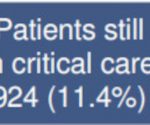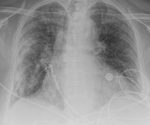Studies suggest that medicine for hypertension causes increased ACE2 levels, and therefore facilitates Covid-19
In this article there is going to be a brief review of the reporting of two studies that look into the relationship between the use of prescription drugs for hypertension and related conditions (ACEIs and ARBs), and increased ACE2 levels and therefore resultant susceptibility to the pulmonary fibrosis indicative of Covid-19 when the SARS-COV pathogen binds to ACE2 present at the lung.
The studies are that performed by a team led by Hans Ackerman at the US National Institute of Allergy and Infectious Diseases (Ackerman et al) and that by researchers at Aarhus University, Denmark, (Kragstrup et al). The reporting of them is done in the articles titled, Some heart medications may facilitate SARS-CoV-2 infection through increasing ACE2 receptor levels (link) and Soluble ACE2 level correlates with COVID-19 outcomes (link), both hosted at News-Medical.net (published 27th April 2021, and 14th March 2021 respectively), with the first referring to an original news release published by the scientific journal, AAAS, while the second refers to a paper published at Medrxiv.org.
In this article, there will be reproduction of extracts primarily of the reporting, but also the source material appertaining to both studies, and a reliance on the reader finding the material to be self-evident so that there doesn’t have to be too much additional comment from the author. Moreover, the author will refrain from stating any conclusion (the title of the piece, which includes the natural extrapolation that one should make, reflects his position adequately enough) in the spirit of this exercise being about the reader deciding his own mind. That being said, there will be intervention to introduce, explain or summarise as and when required.
Before looking at each study separately, it is perhaps very important to highlight that the reporting of both, by way of introduction, lays out what is common knowledge in medical academia, but is withheld from being comprehended by the general public (for reasons discussed previously at this site). The following is from the report on Ackerman et al:
The virus engages host cells via an interaction between its spike glycoprotein and the angiotensin converting enzyme 2 (ACE2) receptor, which also mediates viral entry via fusion with the host cell membrane. At present, the ACE2 receptor is distributed widely on human lung alveolar cells, and on enterocytes in the small bowel, besides arterial and venous endothelium.
The following is from the report on Kragstrup et al:
There [sic] severe acute respiratory syndrome coronavirus 2 (SARS-CoV-2), the virus that causes the coronavirus disease (COVID-19), enters human cell hosts through the binding of the spike protein and angiotensin-converting enzyme 2 (ACE2) receptors.
The study by Ackerman et al was one where the objective was to explore if “common blood pressure medications” could increase levels of ACE2. Mice were exposed for 21 days to the Angiotensin Converting Enzyme Inhibitor (ACEI) , lisinopril and the angiotensin receptor blocker (ARB) losartan, singly and in combination, and were tested for ACE2 levels at various organs where the protein is known to present.
Please note, there is a assertion in the reporting of this study that the small intestine is a chief site of “viral entry” as well as the lungs, although the original news release makes no claim about the details of Covid-19 mechanics. It should be pointed out that in Covid-19 the “viral entry” equates to causation of damage to the lung because the disease is entirely one of the lung (with other organs affected by complications from the subsequent pneumonia). As far as the author’s reading goes, if ACE2 is bound to by SARS-COV in other places than the lung, then this is unessential for the development of the disease.
Considering the summary of the results of the experiment by Ackerman et al, as provided in the reporting, it is clear that provision and then cessation of the medications correlated with increased, and then decreased ACE2 levels:
In the ACEi treatment group, the levels of ACE2 in the brain, kidney, small intestine and lung were raised after 21 days, compared to controls. The ARB-treated mice showed an increase in ACE2 only in the small intestine.
At follow-up, after 21 days from the cessation of treatment, the ACE2 levels had returned to normal in all treatment groups, suggesting that if treatment with either ACEi or ARB is discontinued, the effect wanes to baseline.
Moreover, the researchers were of the opinion that their work reinforced experiments that had already been made (this is from the news release):
Our findings that ACE inhibitor treatment increases tissue expression of ACE2 are in agreement with a previous study in rats that showed ACE2 increased in heart tissue, and a separate study in rats that showed ACE2 increased in lung tissue, following treatment with ACE inhibitors.
Most significant of all, of course, was the information that the researchers took from their experiment regarding the key question that motivated the research:
Based on these findings, we recommend that researchers analyze existing and ongoing clinical studies to determine whether people on ACE inhibitor-ARB combination therapy show different COVID-19 susceptibility, complications and outcomes than patients taking only an ACE inhibitor or ARB medication.
What this is saying is that the animal experiments have shown that there is a need to ascertain to what degree combinations of ACEI and ARB therapy produce susceptibility to Covid-19 through the causation of increased levels of ACE2. For, if one reads the recommendation carefully, what these scientists are saying is that it’s not a question of whether or not ACEIs and ARBs cause susceptibility to Covid-19, but one of discovering what degree of susceptibility is created by these medications in various permutations of treatment.
The study by Kragstrup et al was concerned in finding out “if increased levels of ACE2 in the blood of COVID-19 patients could predict clinical outcomes”, or to put it another way, to discover if there was a correlation between the degree of outcome in a patient hospitalised with Covid-19 and levels of ACE2. In this study, blood plasma was taken from patients both with and without Covid-19 (although this is a matter for contention, because of the high possibility of a misdiagnosis) and ACE2 levels were compared. The reporting summarises the results as follows:
The team found that high baseline ACE2 levels in the plasma of COVID-19 patients are linked to the worse WHOmax category at 28 days. The WHOmax category, also known as the World Health Organization (WHO) COVID-19 outcomes scale, determines the severity of the illness. The lower the score, the more severe the infection outcome is…
Patients with hypertension had higher ACE2 plasma in the blood compared to those without hypertension.
Patients with comorbidities had higher ACE2 levels, including those with kidney disease and heart conditions. However, there was no difference in the plasma ACE2 levels in patients with diabetes, immunosuppressive conditions, and lung disease compared with those without these comorbidities.
The study claimed to show, then, that higher levels of ACE2 in plasma were associated with worse outcomes in cases of Covid-19. Moreover, and perhaps more significantly, a correlation was found between ACE2 levels and hypertension – but actually, what was perhaps being recognised here was the relationship between ACE2 and therapy for hypertension. While high blood pressure can lead to kidney and heart illness, so that, again, patients with these conditions had higher ACE2 than those without could have been due to concurrently prescribed medication, much more information is required.
Indeed, it is ultimately very interesting that the research team arrive at the inevitable issue of medicinal causation of ACE2 when explaining the good use that their study could be put to:
It is desirable to predict disease outcomes in order to specialize treatment, since the drugs used in the treatment of COVID-19 can have deleterious side effects.
The reader might know already that there is a school of thought that actually promotes ACEIs and ARBs as medicine to treat Covid-19 (which the author considers to be counter attack in public relations, without any care for the damage that may be done, by vested interests who will have a lot to lose by the discovery that drugs for hypertension create susceptibility to the disease), and this is what is being referred to, as further clarification elsewhere in the paper shows:
The levels of ACE2 in plasma from COVID-19 positive patients with hypertension were significantly increased compared with plasma from patients without hypertension. Patients with hypertension are often treated with ACE-inhibitors and AT1R-blockers. During this pandemic, it has been highly debated whether or not the use of these antihypertensive medications should be discontinued in patients with COVID-19. A study performed on rats showed that the use of ACE inhibitors and/or use of AT1R-blocker led to an increased expression of ACE2. This has raised the concern that patients with hypertension, who are treated with ACE2-modulating drugs like ACE-inhibitors or AT1R-blockers might be at a higher risk for severe COVID-19 infection, since it could increase the entry-way for the virus. A recent study showed that plasma ACE2 activity is increased in COVID-19 patients treated with ACE inhibitors. However, more severe COVID-19 disease in patients treated with ACE-inhibitors or AT1R-blockers has not been supported by recent population based data.
The last sentence is controversial, and as such there must be a closer look at it. However, just before that, please note that the Kragstrup et al study found that “there were no associations between plasma ACE2 levels and BMI”, which is an incredibly important finding because of the attempt by UK Government to link obesity with Covid-19 (which, again, in the author’s opinion, is a scheme to divert blame, so that there is no detrimental fallout for the very lucrative business of pushing drugs for hypertension, and also obesity, which is the feeder illness, on the NHS).
The so called “recent population based data” referred to by the Kragstrup et al study is material produced by Harmony R. Reynolds (M.D.) and others, and it appears to be the result of research to assess the relationship between previous treatment with a whole host of different medicines (“ACE inhibitors, angiotensin-receptor blockers, beta-blockers, calcium-channel blockers, or thiazide diuretics”), and “the likelihood of a positive or negative result on Covid-19 testing as well as the likelihood of severe illness (defined as intensive care, mechanical ventilation, or death) among patients who tested positive”.
The flaw should be obvious (apart from the dilution of the study with so many drugs to be tested), because a positive test doesn’t necessarily have to be an indicator of real Covid-19. As such, a severe illness that is not thought to be Covid-19 could in fact be a case of the disease, and a severe illness that has nothing to do with it could be deemed by faulty test as being Covid-19. Above all else, what the Kragstrup et al study was concerned with was Covid-19 illness that was simultaneous with treatment with ACEIs and ARBs, and so the Reynolds study, looking at previous treatment, was at odds with its purposes. As far as concurrency of treatment with the disease was concerned, Ackerman et al showed that there was a link to show that the former had a bearing on the latter.
Preface: More On ACE2: Some Truth In A Time Of Frenzied Controlled Opposition Alternative Media Hysteria-Stoking Misdirection (link)


















